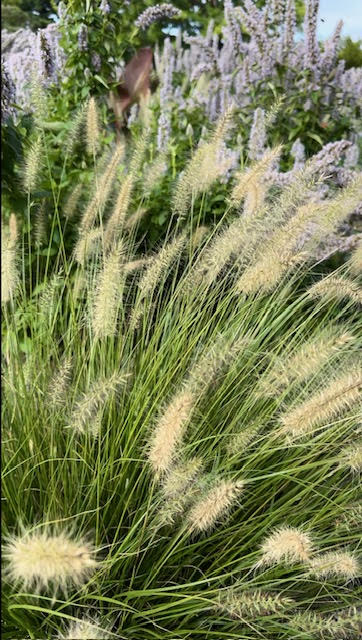I’m sharing some ideas to invite stillness into your life. These tips are for anyone who finds it challenging to meditate or “be still.” Maybe that’s you most of the time. Maybe only sometimes.
Difficulty with being still in meditation is something I have had to tackle in my own practice. My body and mind have often (and continue to, at times) struggle to remain still. For me, part of this challenge is nervous energy and part is physical stiffness.
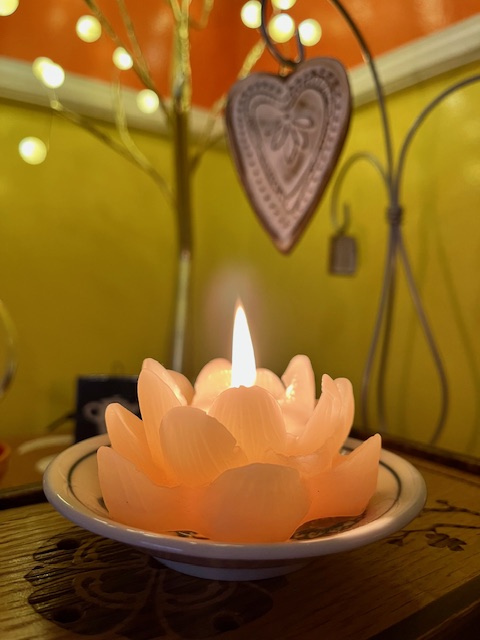
Two ways of thinking about the challenge really helped me. First, reframe the issue of stillness. Recognize that stillness can be “absolute” or relative.
Secondly, conceptually and physically separating forms of stillness can also be helpful. You can be (relatively) still in body and/or mind. Either and both can be healthy and are worth cultivating.
Here are some ways to invite stillness into your life.
Bring mindfulness into your tea or coffee time
Do you drink tea (or coffee) every day…or routinely on certain days of the week? If so, you can harness a habit you already have and make some tweaks to find (more) stillness.
Suggestion when you need a quick practice:
On days you need to fix your tea and run out the door, release the temptation to multitask. Don’t plan your day, troubleshoot a work problem, listen to a podcast, etc. Bring your full attention to preparing the tea or coffee. If you find your mind wandering, as is 100% natural, gently invite it back to what you are doing. Focus on your senses–the weight of the teapot, aroma of the tea leaves, sound of the water pouring, etc. Of course, you are moving your body if you follow this suggestion. But, you are concentrating your awareness in the present moment. This is a form of…or proximity to…stillness that can be very restorative and help build your stillness “muscle.”
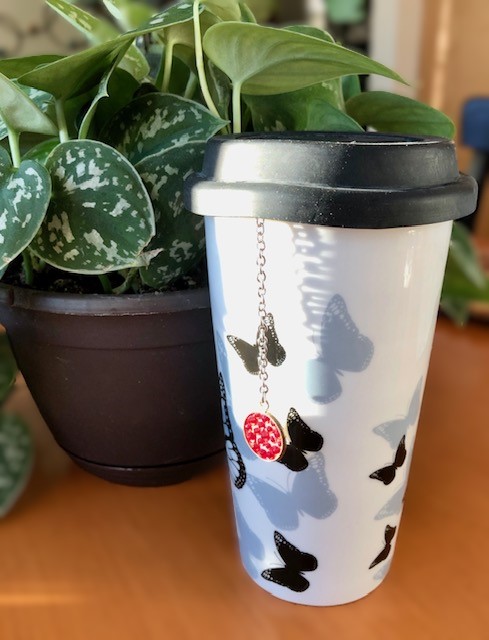
Suggestion for when you have 10 or more minutes:
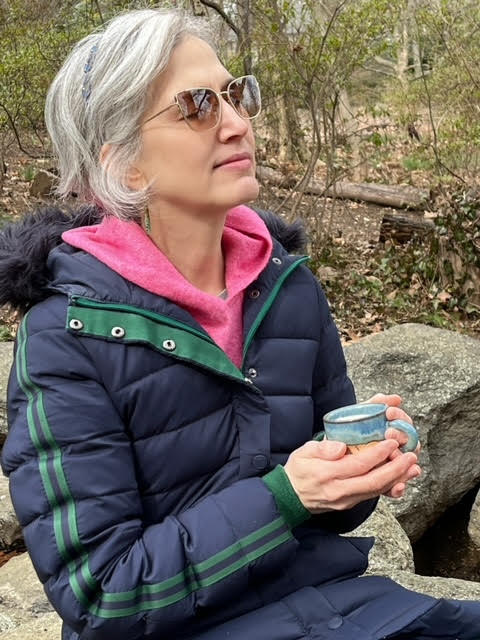
When you have more time to invite stillness into your life, like in the practice above, focus on preparing the tea and the sensory elements that go along with it.
With more time, you can add siting (or standing) with your tea and prolong the attention to the sensory experience. Any time you notice your mind wandering outside the tea or the sensory experiences of this moment, kindly invite it back.
If this interests you, I dive deeper into this practice, and share more ideas, in my post “Tips for Restful Tea Time.“
Invite stillness with curated music or sounds
If you’d like to work more on being physically still, choosing music or a soundtrack (nature sounds, for example) can be very helpful. Pick a track you like that is a length of time you think would be workable for you. (You can start shorter and work toward longer pieces.) Get comfortable. Then, put on the audio.
Headphones can help enhance concentration and the sense of being immersed in the sounds. As you relax your body, focus on listening/the experience of the music. When your mind wonders, return to the music. Want to take it to the next level? Attend an online or in-person sound bath.
You can even place full attention on sounds during a tea session. For more on this approach, see my post “Tea Soundscapes and Mindfulness.”
Practice Mindfulness or Meditation While Walking or Swaying
Need to walk to lunch or a meeting? Or, maybe you already schedule walk breaks in your day or on the weekends.
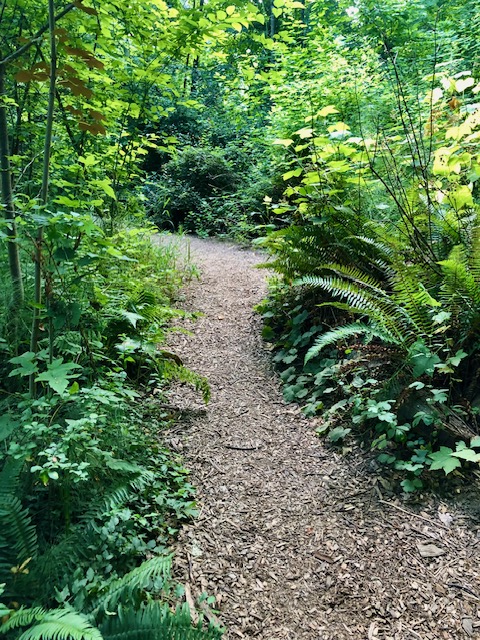
If you are walking alone, you can help bring relative stillness to your mind by focusing on the sensation of your feet touching the ground as you walk, the nearby sounds (only use these if they feel relaxing), or the angle of the sunlight. Anything. When you notice your mind wandering, gently invite it back to whatever you’ve chosen to focus on. (Note: Don’t do this while crossing a street or in any environment where you need to take care to be safe.) Walking meditation is a recognized form of meditation.
Want to sit and meditate but find focusing on traditional techniques like breathwork or body scans difficult? Why not sway while you try them? Some faith traditions, for example, incorporate movement into prayers. Moving the body in a rhythmic way can focus the body and the mind. By moving while anchored in one place, it’s stillness of a sort.
Invite Stillness via Comfort
Another thing that can help is to make yourself comfortable–literally. You don’t have to sit on a hard floor, or an uncomfortable chair, etc. Take time to figure out how to add pillows, blankets, and/or supports in a way to that suits your body. It took me a while to find different cushions and configurations with blankets and towels so I could feel comfortable meditating seated on the floor for more than 5 minutes. For me, raising my hips above my knees and having soft support under my ankles have been gamechangers.
There’s a lot of advice available about supportive cushions and setups for meditating. Happily, you can often use things you already have around the house.
Another tip: check out yoga nidra advice (a kind of rest yoga). There are really good ideas in many yoga nidra spaces for becoming comfortable. I’ve tried things that were suggested in these spaces and was surprised by how much they helped!
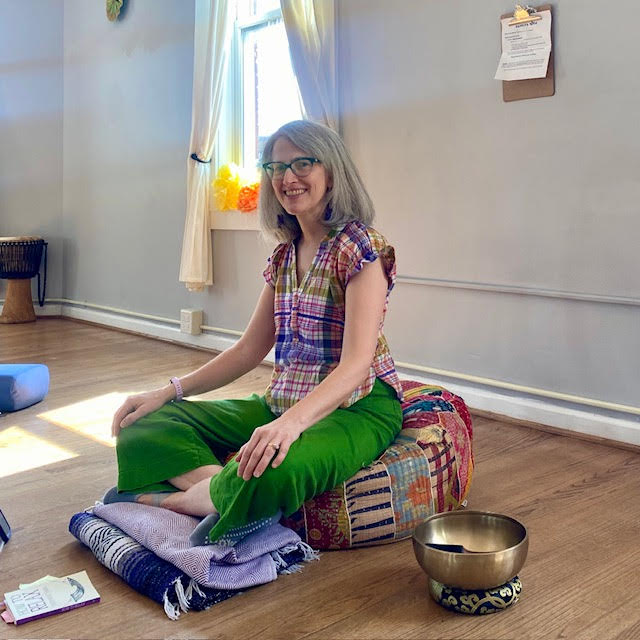
I can’t emphasize enough: you don’t have to sit on a hard floor! Sitting in a comfortable chair or reclining on a comfortable sofa is perfectly fine. Stillness does not have to be an exercise in physical discomfort. 😉
Practice Stillness with Others
Another excellent way to develop and keep a habit of stillness is to make it social and communal.
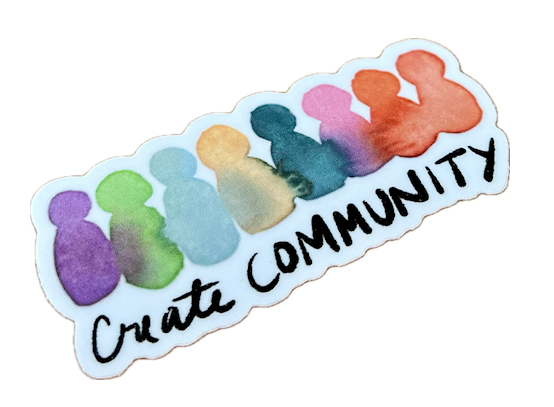
Find a group that has an approach that resonates with you. Start a routine of meeting and/or being with others who are practicing stillness. Group energy can be very encouraging and supportive when we practice together. We help each other–and what’s greater than that?!
Even if you cannot find an in-person or online group to practice with in real time, connecting with video or audio–or even simply knowing other people are engaging in the same practices as you are–can create a helpful sense of connection.
Another approach is to ask friend or relative. You could either ask if they’d like to practice with you OR you could each practice individually, then check in with each other about it.
Final Thoughts on Cultivating Stillness
You aren’t failing if you need to move from time to time during a physical practice or your mind wanders during an attempt at mental stillness. Most meditation teachers will tell you that recognizing when your mind wanders, and needing to begin again (perhaps after movement), are critical parts of the practice.
Let me say that again! They are parts. of. the. practice. They aren’t failing at it. Let’s take the pressure and judgment out of practicing.
Speaking of judgment, upon deeper thought, do you suspect that you may be consciously or subconsciously resistant to being still because it is “not doing anything productive?” Could this message be contributing to your challenge with stillness? If so, I heartily encourage Octavia Raheem’s Pause, Rest, Be. It helped me recognize some of my own biases against rest.
Has this post given you any new ideas? Do you have another proven way to invite stillness into your life? I invite you to share in the comments.
